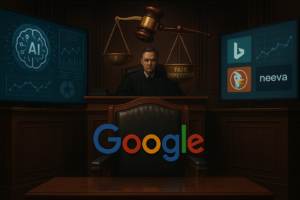California’s Bold Move: The Veto of the AI Safety Bill and Its Implications
Summary: In a significant decision, California Governor Gavin Newsom has vetoed the Safe and Secure Innovation for Frontier Artificial Intelligence Models Act (SB 1047). This article explores the implications of this veto on AI regulation, innovation, and public safety, while highlighting the ongoing debate surrounding the balance between oversight and technological advancement.
In a world increasingly dominated by artificial intelligence, the question of how to regulate this powerful technology has never been more pressing. Recently, California Governor Gavin Newsom made headlines by vetoing the Safe and Secure Innovation for Frontier Artificial Intelligence Models Act (SB 1047), a bill that aimed to impose stringent safety measures on the state’s largest AI companies. The veto has sparked intense debate about the future of AI regulation in California and beyond.
Overview of SB 1047
SB 1047 was crafted to be the strictest AI regulatory framework in the United States, targeting companies whose AI systems require substantial investment to develop. Specifically, it sought to impose security requirements on those with training costs exceeding $100 million or fine-tuning costs over $10 million. The bill mandated that developers implement critical safety protocols, including:
- A “kill switch” feature
- Comprehensive testing procedures to mitigate risks such as cyberattacks and public health crises
Governor Newsom’s Concerns
However, in his veto message, Governor Newsom raised concerns about the potential negative impact of the legislation. He argued that the bill’s broad application could inadvertently stifle innovation, particularly among smaller AI firms that may not pose the same level of risk as their larger counterparts. “While well-intentioned, SB 1047 does not take into account whether an AI system is deployed in high-risk environments,” Newsom stated. He emphasized the need for a more nuanced approach to regulation that considers the diverse capabilities and applications of AI systems.
Criticism of the Veto
Critics of the veto, including Senator Scott Wiener, the bill’s primary author, expressed disappointment, arguing that the decision undermines necessary oversight of powerful technologies that can have profound societal implications. Wiener claimed that without binding restrictions, AI companies could operate without accountability, potentially jeopardizing public safety and welfare. He described the veto as a setback for those advocating for responsible AI governance.
Industry Reactions
The response from the tech industry has been mixed. While some AI leaders, such as OpenAI’s chief strategy officer, argued that the bill would hinder progress, others acknowledged the need for safety measures. Dario Amodei, CEO of Anthropic, noted that while the revised version of SB 1047 included improvements, the emphasis should be on finding a balanced approach to regulation.
The Future of AI Governance in California
As California continues to be a leader in AI development, the decision to veto such a significant piece of legislation raises important questions about the future of AI governance. The state must navigate the fine line between fostering innovation and ensuring public safety. With the federal government also exploring AI regulations, the eyes of the tech community are on California to see how it will address the challenges of AI oversight moving forward.
In conclusion, Governor Newsom’s veto of SB 1047 highlights the complexities of regulating a rapidly evolving technology like AI. As the dialogue continues, finding a framework that effectively protects the public while encouraging innovation will be crucial in shaping the future landscape of artificial intelligence. The balance between oversight and growth is delicate, but essential for a safe and innovative technological future.


